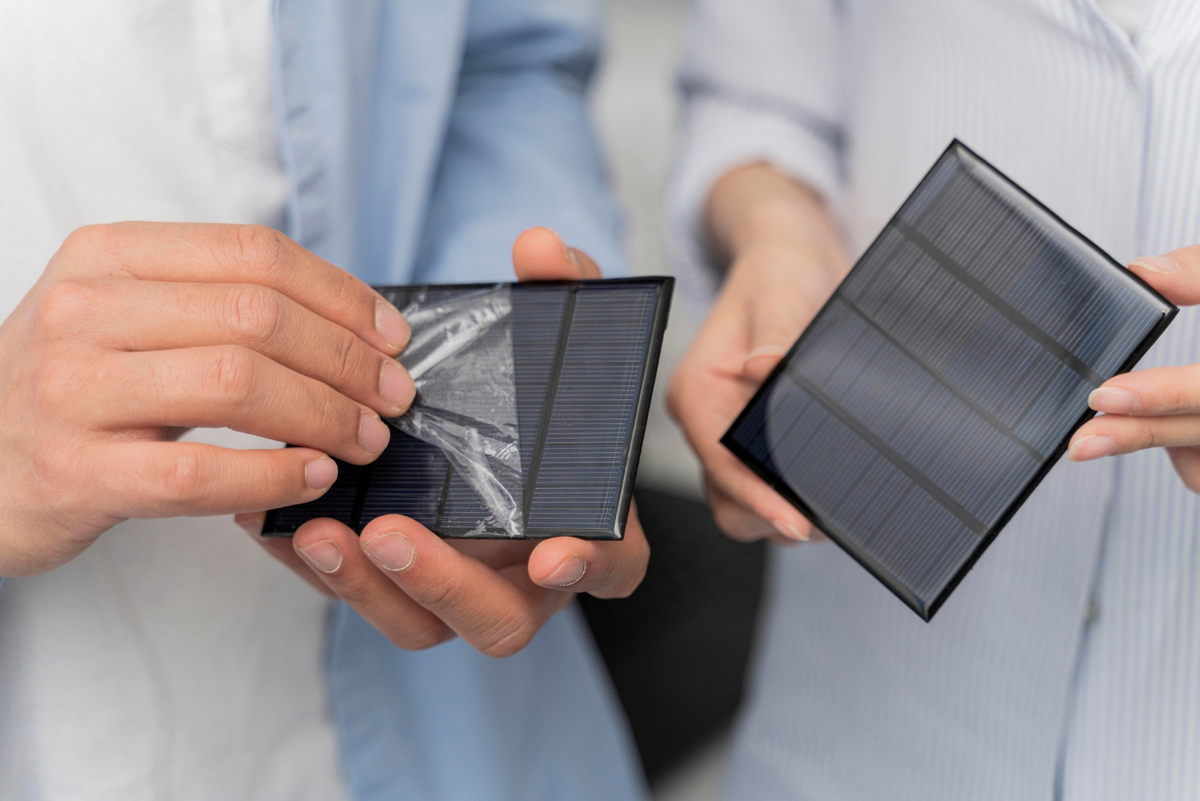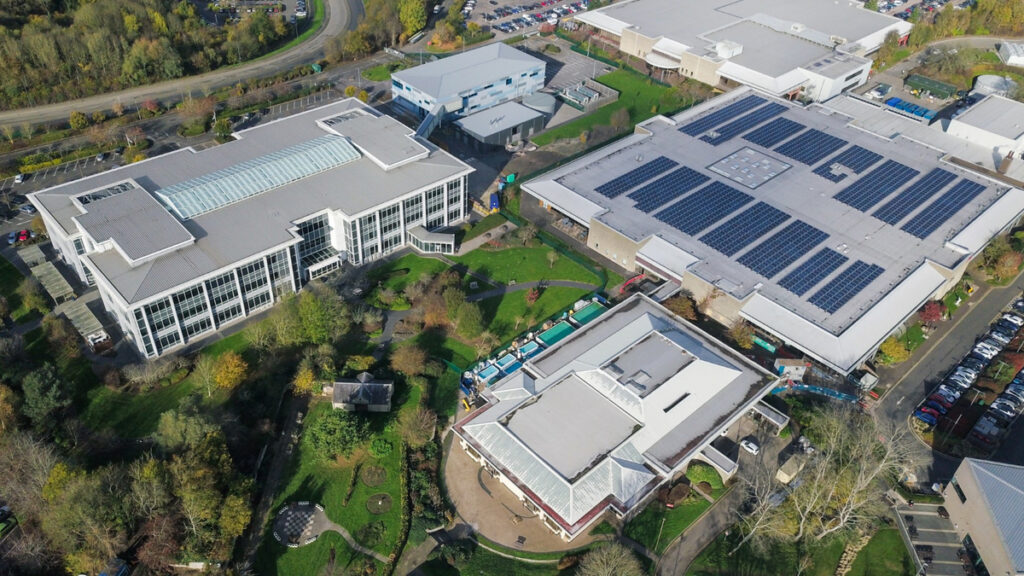Building-Integrated Photovoltaics (BIPV) represent a transformative approach in sustainable construction, moving beyond traditional rack-mounted solar panels to seamlessly integrate photovoltaic materials directly into the building envelope. These systems serve a dual purpose: generating clean electricity while simultaneously performing essential building functions such as weather protection, thermal insulation, noise reduction, and daylighting. This inherent multifunctionality fundamentally differentiates BIPV from conventional solar installations, positioning it as an integral component of modern architectural design rather than a mere add-on.
The ability of BIPV to function as a structural element, such as a skylight that is both a building component and an energy system, highlights its unique value proposition, offering an offset to the cost of conventional building materials and labor that would typically be required for construction. This integrated approach is crucial for optimizing the entire energy system of a building, emphasizing that maximizing energy efficiency within the building’s demand should be the foundational first step in any BIPV application.
Table of Contents
The Multifunctional Role of BIPV in Modern Architecture
Building-Integrated Photovoltaics are increasingly recognized as indispensable for the global transition towards decarbonization and enhanced energy resilience within urban environments. By transforming buildings from passive energy consumers into active energy producers, BIPV contributes significantly to reducing overall energy consumption and mitigating greenhouse gas emissions. This role is particularly critical given that the building sector accounts for approximately half of the world’s energy consumption.
The strategic integration of BIPV into building surfaces, especially in dense urban areas where undeveloped land is scarce and expensive, offers an optimal method for deploying renewable energy systems. Beyond electricity generation, BIPV contributes to the overall comfort, efficiency, and safety of a building. For example, BIPV systems can provide thermal insulation, noise protection, and controlled daylight illumination, making them a comprehensive solution for sustainable construction. This holistic contribution supports the broader objective of achieving net-zero energy buildings by both reducing energy demand and generating power on-site.
The Foundational Principles of BIPV Integration
1. Dual Functionality: Energy Generation and Building Envelope
The core principle of BIPV Technologies lies in their capacity to operate as both an electricity generator and an intrinsic part of the building’s physical structure. This approach diverges significantly from conventional solar panels, which are typically mounted onto existing building surfaces. BIPV modules, such as a photovoltaic skylight or facade panel, are meticulously designed to be an inherent component of the building envelope, providing essential functions like weather protection, thermal insulation, and even noise attenuation, all while converting sunlight into usable electricity.
This deep integration allows for a more streamlined construction process and can directly offset the cost of traditional building materials that would otherwise be needed. The industry’s progression from merely adapting standard PV panels to developing materials specifically engineered for building integration marks a significant maturation.
Early BIPV implementations sometimes compromised either aesthetics or performance due to the use of modified standard panels, but contemporary advancements focus on creating materials that truly merge with architectural design, offering varied appearances, shapes, and transparencies. This shift signifies a movement from simply adding solar onto a building to genuinely building solar with the building materials themselves, unlocking new design possibilities and enhancing the overall value proposition of the structure.
2. Diverse Applications Across Building Surfaces
BIPV Technologies offer remarkable versatility, enabling integration into virtually any sun-exposed surface of a building. This adaptability is crucial for maximizing a building’s solar energy harvesting potential, especially in urban areas where traditional rooftop space may be limited or suboptimal for conventional solar installations.
3. Roofing Systems
BIPV roofing systems encompass products like solar tiles, shingles, and standing seam panels that seamlessly replace conventional roofing materials. These solutions maintain the aesthetic integrity of the roof while generating power, making them ideal for residential homes and buildings with pitched roofs. Innovations in this area, such as the GoodWe Galaxy Series, offer ultra-lightweight, frameless BIPV products suitable for roofs with limited load-bearing capacity, demonstrating how design can overcome structural limitations to expand BIPV applications.
4. Facade Systems
Facade BIPV systems involve integrating vertical solar panels into the exterior walls of buildings, including curtain walls, spandrel panels, and cladding. This application is particularly beneficial for high-rise buildings where the roof-to-facade ratio is unfavorable for meeting energy loads solely from the roof. In such dense urban environments, leveraging facades becomes critical for achieving net-zero energy goals. The optimization of PV integration on both roofs and facades is essential for maximizing self-consumption and improving grid stability by balancing energy generation across different orientations and seasonal variations. Companies like Mitrex are pioneering BIPV facades that are highly customizable in design and color, transforming building envelopes into energy-generating canvases that merge architectural elegance with solar efficiency.
5. Transparent and Semi-Transparent Glazing
BIPV glazing, including windows and skylights, allows natural light to pass through while simultaneously generating electricity. This is achieved through advanced materials that absorb specific wavelengths of light, such as ultraviolet (UV) and Near-Infrared (NIR), while remaining visibly transparent or semi-transparent. Such applications provide thermal insulation, solar radiation control, and glare reduction, enhancing interior comfort and energy efficiency.
The ability to customize BIPV in terms of color, transparency, and form is a significant driver for architectural adoption. However, achieving this often involves a nuanced trade-off with energy efficiency, as increasing transparency typically leads to a decrease in power conversion efficiency. This necessitates careful material selection and design to balance aesthetic and energy performance goals, making it a complex technical challenge that drives ongoing research and development in wavelength-selective absorption and transparent electrodes.
Suggested article to read: Importance of Energy Efficiency in Buildings

Game-Changing BIPV Technologies for 2025
The BIPV market is experiencing exponential growth, projected to reach $25.46 billion in 2025 and $58 billion by 2029, driven by demand for zero-energy buildings, rising electricity costs, and continuous technological advancements. This robust growth is fueled by several game-changing BIPV Technologies that are fundamentally reshaping how buildings interact with energy. The transformative nature of BIPV in 2025 is primarily driven by breakthroughs in material science. Innovations in perovskite, flexible, bifacial, Heterojunction Technology (HJT), and Passivated Emitter and Rear Cell (PERC) technologies directly address BIPV’s key challenges: efficiency, aesthetics, and adaptability. These material advancements are enabling BIPV to move beyond conceptual designs into widespread practical applications.
1. Perovskite Solar Cells: High Efficiency and Versatility
Perovskite solar cells (PSCs) are rapidly emerging as a revolutionary BIPV Technology due to their exceptional properties: high power conversion efficiencies (exceeding 29% in laboratory settings), low production costs, and remarkable versatility. These cells utilize a perovskite-structured compound as their light-absorbing layer, capable of absorbing a broader spectrum of sunlight than traditional silicon cells.
Technical Advancements and BIPV Integration
Recent breakthroughs include perovskite-silicon tandem cells achieving record efficiencies of 33.9%, pushing beyond the theoretical limits of single-junction silicon cells. The ability to fabricate perovskite materials into flexible, lightweight, and even semi-transparent forms makes them ideal for seamless integration into building materials such as windows and facades. This allows buildings to generate electricity while maintaining natural light and aesthetic appeal. Perovskite’s combined advantages of high efficiency, low cost, flexibility, and transparency position it as a foundational technology that simultaneously addresses multiple BIPV challenges and opens new application possibilities, particularly for aesthetic integration.
Practical Applications and Future Outlook
Perovskite BIPV is quickly transitioning from laboratory research to commercial deployment. Projects like Microquanta’s 17.92 kWp installation on a translucent university roof demonstrate real-world application, achieving 40% light transmittance while generating power. Companies like Sekisui Chemical and UtmoLight are investing in large-scale production lines, with plans for 100 MW and gigawatt-scale facilities by 2027 and 2030, respectively. This rapid scale-up in production capacity signals a strong trajectory towards mass adoption of perovskite BIPV products, effectively overcoming typical commercialization hurdles for emerging technologies. Furthermore, ongoing research into lead-free perovskites and enhanced stability continues to address environmental and durability concerns, paving the way for even broader acceptance.
2. Advanced Thin-Film BIPV: Lightweight and Flexible Solutions
Thin-film BIPV Technologies offer distinct advantages over traditional crystalline silicon, primarily their lightweight nature, flexibility, and potential for semi-transparency. These characteristics make them highly suitable for diverse architectural applications where conventional panels are impractical, such as curved surfaces or building facades with weight restrictions.
These cells are composed of layers just micrometers thick, allowing them to be applied to flexible substrates like polymers or thin metal foils, or rigid materials such as glass. Beyond their aesthetic and flexibility benefits, thin-film BIPV Technologies offer significant environmental advantages, including lower greenhouse gas emissions and reduced human toxicity during manufacturing compared to first-generation cells. This positions them as a highly sustainable choice in modern construction.
Cadmium Telluride (CdTe) and Copper Indium Gallium Selenide (CIGS)
Cadmium Telluride (CdTe) is a predominant thin-film technology, demonstrating laboratory efficiencies of 22.10% and commercial module efficiencies of 19%. It is noted for its low energy payback time and favorable environmental impact over its lifecycle. Copper Indium Gallium Selenide (CIGS), another significant thin-film material, has achieved laboratory efficiencies of up to 23.35% and commercial efficiencies of 15-17%. CIGS cells are particularly well-suited for flexible substrates and offer tunable bandgaps, enhancing their versatility for various applications.
Organic Photovoltaics (OPV) and Amorphous Silicon (a-Si)
Organic Photovoltaic (OPV) panels utilize carbon-based polymers, offering lightweight, flexible, and cost-effective solutions through roll-to-roll printing techniques. OPVs are environmentally friendly, with a lower carbon footprint and non-toxic compounds, and exhibit enhanced performance in low-light conditions, making them suitable for indoor applications and shaded environments. While current OPV efficiencies are lower than silicon (up to ~19.3% in lab settings), their aesthetic customization in terms of colors and transparency makes them ideal for seamless architectural integration into windows, facades, and roofs. Amorphous silicon (a-Si) is another well-developed thin-film technology, known for its low processing temperatures, scalability on flexible substrates, and good performance in weak light conditions.
3. Quantum Dot Solar Cells (QDSC): Enhancing Transparency and Low-Light Performance
Quantum Dot Solar Cells (QDSCs) are transforming BIPV by enabling windows, walls, and facades to become power-generating surfaces while maintaining high levels of transparency. These cells utilize semiconductor quantum dots, allowing for precise tuning of their bandgap to enhance light absorption and energy conversion across a broad spectrum.
Integration into Windows and Facades
QDSCs are clear and highly efficient, making them exceptionally suitable for city buildings and smart cities where natural light and aesthetic appeal are paramount. Companies like Solar Window Technologies are actively improving QDSC-based solar windows, demonstrating their practical application in commercial settings. Their ability to be integrated into flexible, lightweight, and semi-transparent modules makes them highly versatile for facades, windows, and rooftops, allowing for broader application in architectural design.
Market Status and Potential for Urban Environments
QDSCs are particularly effective under low-light conditions, making them suitable for shaded areas within urban environments where direct sunlight may be limited. Despite their promising potential, QDSCs currently face challenges with widespread commercial availability due to production complexities, higher manufacturing costs compared to silicon, and a lack of established industry standards.
However, public and private investments are accelerating their commercialization, driven by the growing demand for net-zero energy buildings and smart city initiatives. While overall market adoption might be slower, QDSCs already hold a dominant revenue share within the BIPV application segment, indicating a strong existing demand for their specific attributes of transparency and flexibility in architectural integration. This suggests that their impact within the BIPV niche is already significant, even as broader commercialization continues to evolve.
4. Bifacial BIPV Modules: Maximizing Energy Harvest from Multiple Angles
Bifacial BIPV Technologies represent a significant advancement by enabling energy generation from both sides of the panel. This innovative design allows the modules to capture direct sunlight from above and reflected light from surfaces below, such as light-colored roofing materials, concrete, white gravel, or even snow.
Principles of Dual-Sided Power Generation
By harnessing reflected sunlight, bifacial panels can boost energy output by 5-30% compared to traditional single-sided panels, depending on installation conditions and surface reflectivity. This dual-sided capture significantly enhances the energy yield from the same installed area, making them particularly attractive for properties with limited installation space where maximizing energy generation per square meter is crucial. This focus on optimizing energy harvest in diverse, real-world conditions, rather than just raw cell efficiency, is a key differentiator for bifacial BIPV.
Optimizing Installation for Enhanced Yield
For optimal performance, bifacial BIPV modules typically perform best when mounted at least 0.9 meters (3 feet) above a reflective surface and at an ideal tilt angle between 30 and 40 degrees. East-west orientations can also prove more effective than traditional south-facing installations, as they can capture more reflected light throughout the day, balancing morning and afternoon production. Proper spacing between panel rows and avoiding shading from surrounding obstacles are crucial for maximizing their efficiency, ensuring that both sides of the panel receive adequate light.
5. Smart BIPV Systems: Leveraging AI and IoT for Optimized Performance
The integration of Artificial Intelligence (AI) and the Internet of Things (IoT) is transforming BIPV Technologies into intelligent, responsive energy systems. These smart BIPV systems enhance efficiency, predict maintenance needs, and facilitate seamless grid integration, moving beyond simple power generation to comprehensive energy management.

Real-Time Monitoring and Predictive Maintenance
IoT sensors continuously monitor panel performance, detecting potential issues before they escalate into problems and scheduling maintenance proactively. AI-driven analytics optimize energy production by predicting weather patterns and automatically adjusting panel positioning to maximize energy capture throughout the day. This predictive maintenance capability significantly extends the system’s lifespan and maintains optimal efficiency levels, reducing operational costs and increasing the reliability of BIPV installations. The increasing integration of digital technologies like AI, machine learning, and digital twins into BIPV systems is critical for optimizing performance, predicting maintenance needs, and ensuring long-term reliability.
Synergy with Building Energy Management Systems (BEMS)
Smart BIPV systems are designed to communicate with the grid and other energy systems, enabling real-time energy management. When integrated with Building Energy Management Systems (BEMS), which often incorporate machine learning and AI, BIPV can optimize the interaction between on-site generation, energy storage solutions (like lithium-ion batteries), and building loads. This synergy is considered particularly important for achieving Zero or Near-Zero Energy Buildings (ZEB/nZEB) by greatly decreasing a building’s net energy usage and mitigating greenhouse gas emissions. This intelligent management ensures that energy is not only generated efficiently but also consumed optimally, contributing to a more responsive and resilient energy grid.
Table 1: Comparison of Game-Changing BIPV Technologies
| Technology | Key Characteristics | Efficiency Range (Lab/Commercial) | Flexibility | Transparency | Primary BIPV Application | Notable Advantages | Key Challenges |
|---|---|---|---|---|---|---|---|
| Perovskite Solar Cells | Hybrid organic-inorganic compounds, broad spectrum absorption | >29% (lab), 33.9% (tandem) | High (flexible, lightweight) | Semi-transparent possible | Windows, Facades, Roofs | High efficiency, low cost, versatile, printable, aesthetic integration | Stability, lead content (research for lead-free) |
| Thin-Film BIPV (CdTe, CIGS, OPV, a-Si) | Micrometer-thin layers on various substrates | CdTe: 22.1% (lab), 19% (comm); CIGS: 23.35% (lab), 15-17% (comm); OPV: ~19.3% (lab) | High (flexible, rollable) | Transparent/Semi-transparent possible | Facades, Windows, Curved surfaces, Roofs | Lightweight, cost-effective manufacturing, environmentally friendly, low-light performance (OPV/a-Si) | Lower efficiency than c-Si (historically), durability (OPV), material availability (CIGS) |
| Quantum Dot Solar Cells (QDSC) | Semiconductor quantum dots with tunable bandgaps | High efficiency potential | High (flexible, lightweight) | High transparency possible | Windows, Facades, Smart Cities | Clear transparency, effective in low-light, tunable bandgap | Limited commercial availability, higher cost vs. silicon, lack of industry standards |
| Bifacial BIPV Modules | Energy generation from both front and rear sides | Up to 30% boost over single-sided | Moderate (panel-based) | Opaque | Ground-mounted, Rooftops with reflective surfaces | Maximizes energy harvest from reflected light, higher yield per area | Requires specific installation conditions (height, reflective surface) |
| Smart BIPV Systems (AI/IoT) | Integration of digital intelligence with PV modules | (Enhances efficiency of underlying PV tech) | (Dependent on underlying PV tech) | (Dependent on underlying PV tech) | All BIPV applications, Building Energy Management | Real-time monitoring, predictive maintenance, optimized energy flow, grid integration | Data security, system complexity, initial setup costs |
Market Dynamics and Driving Forces for BIPV Adoption
The global BIPV market is experiencing significant expansion, with projections indicating a rise from $20.5 billion in 2024 to $25.46 billion in 2025, and further to $58 billion by 2029. This robust growth is underpinned by a confluence of interconnected factors, including environmental mandates, economic incentives, technological advancements, and aesthetic demand. This holistic demand picture suggests robust and sustained growth, indicating that BIPV’s success is not reliant on a single breakthrough but on a systemic shift in building design, energy policy, and technological integration.
1. The Global Push Towards Net-Zero Energy Buildings
A primary driver for BIPV adoption is the escalating global demand for zero-energy buildings (ZEB) and carbon-neutral structures. These buildings are designed to consume only the amount of energy that can be generated on-site through renewable sources over a defined period. BIPV Technologies offer a highly feasible solution for building exteriors to achieve these ambitious energy targets, directly contributing to reduced carbon emissions from the built environment.
International regulations, such as EU mandates requiring new buildings to be nearly zero-energy, are significantly accelerating BIPV deployment. For instance, the EU-funded Be-Smart project aims to cut BIPV costs by 75% by 2030 in response to these regulations, demonstrating a strong policy push that will accelerate technological and market maturation. This positions BIPV as a critical tool for achieving national and regional energy goals, transforming it from a niche solution to a policy-mandated standard.
2. Economic Benefits and Cost-Saving Construction Projects
Despite initial higher costs compared to traditional photovoltaic systems or conventional building materials, BIPV systems offer substantial long-term economic benefits. They generate significant on-site electricity (50-150 kWh/m² annually), leading to reduced electricity bills and a simple payback period typically ranging from 5 to 15 years.
Furthermore, BIPV contributes to cost-saving construction projects by serving as a direct replacement for traditional building materials, thereby offsetting material and labor expenses. This means BIPV offers a clear economic return, shifting the perception from an expensive luxury to a strategic, economically sound choice, especially for achieving ZEB/nZEB goals. Government incentives, subsidies, and tax rebates further enhance the financial attractiveness of BIPV adoption, providing additional impetus for market growth.
3. Industry Collaboration and Standardization Efforts
The expansion of BIPV Technologies is increasingly supported by strong collaborations between solar manufacturers, architects, and construction firms. These partnerships are crucial for fostering innovation, streamlining design and installation processes, and addressing the unique challenges of integrating PV into complex building structures. Research institutions like Fraunhofer ISE, NREL, SUPSI, EPFL, and CSEM are actively involved in developing innovative solutions, conducting performance analyses, and working to establish BIPV as a standard in the construction industry.
A significant opportunity for cost reduction in BIPV lies in the deeper integration of PV installation processes with traditional roofing and construction trades. Currently, separate supply chains and skill sets often lead to inefficiencies, but further integration can reduce supply chain delays and labor redundancies, making the entire construction process more efficient and cost-effective. Efforts are also underway to develop comprehensive methodologies and address knowledge gaps within the industry, ensuring that best practices are disseminated and adopted.
Table 2: BIPV Market Growth Projections
| Metric | 2024 Market Size | 2025 Market Size | CAGR (2024-2025) | 2029 Market Size (Projected) | CAGR (2024-2029) |
|---|---|---|---|---|---|
| BIPV Market | $20.5 Billion | $25.46 Billion | 24.2% | $58 Billion | 22.9% |

Addressing Key Challenges in BIPV Deployment
Despite the promising advancements and robust market growth, the widespread adoption of BIPV Technologies faces several interconnected challenges that require strategic solutions. These challenges often stem from BIPV’s dual nature as both an energy system and a building component, necessitating integrated solutions involving design, engineering, policy, and market education.
1. Navigating Upfront Costs and Performance Optimization
The higher initial investment for BIPV systems compared to conventional building materials or traditional PV installations remains a primary barrier to widespread adoption. While BIPV offers long-term energy savings and a clear return on investment, the upfront capital expenditure can be a hurdle, particularly for smaller projects. Performance optimization is also critical; BIPV systems can experience higher operating temperatures due to flush integration, which prevents adequate airflow and can potentially affect efficiency and longevity.
Architectural constraints, such as suboptimal orientation or shading from adjacent structures in urban environments, can further reduce energy yield. While customization is a significant aesthetic advantage for BIPV, this emphasis on custom-design often segments the market and hinders scalability, preventing the economies of scale that have driven down costs in traditional PV. For BIPV to achieve wider adoption and lower costs, a balance must be struck between bespoke architectural solutions and standardized, modular components that can benefit from mass production.
2. Regulatory Compliance and Fire Safety Considerations
BIPV Technologies must comply with a complex array of building codes, electrical standards, and safety regulations, which can vary significantly across regions. This dual compliance requirement, as BIPV functions as both a PV system and a building component, adds complexity to design and installation, creating an awkward position between the two industries. A critical concern is fire safety, given the close integration of photovoltaic modules, cables, and electrical equipment within the building structure.
Existing fire safety standards often do not adequately address the unique characteristics of BIPV, leading to complex fire propagation paths, difficulties in extinguishment (as systems may remain energized), and challenges in early fire detection. Improper electrical design, low-quality modules, and non-standard installation practices further heighten fire risks. Addressing these multifaceted fire safety concerns requires specialized design, stringent installation protocols, and the development of specific BIPV fire safety standards to ensure safe and reliable deployment.
FAQs
How do BIPV Technologies differ from traditional solar panels? BIPV Technologies are seamlessly integrated into a building’s structure, replacing conventional materials like roofs or facades, while traditional solar panels are mounted onto existing surfaces. BIPV serves dual functions: energy generation and building envelope performance (e.g., weather protection, insulation).
What are the main benefits of using BIPV Technologies in modern buildings? BIPV offers on-site renewable energy generation, reduced electricity bills, enhanced building aesthetics, improved thermal and acoustic insulation, increased daylighting, and contributes significantly to achieving net-zero energy building certifications.
Which emerging BIPV Technologies show the most promise for 2025? Perovskite solar cells (for high efficiency and transparency), advanced thin-film BIPV (for flexibility and lightweight applications), quantum dot solar cells (for high transparency and low-light performance), bifacial BIPV modules (for maximizing energy capture), and smart BIPV systems integrating AI/IoT (for optimized performance and management) are key.
Is it true that BIPV systems are more expensive than traditional solar installations? BIPV systems typically have higher upfront costs due to their specialized integration and dual functionality. However, these costs are often offset by long-term energy savings, the replacement of conventional building materials, and various government incentives, leading to a reasonable payback period.
Conclusion
Building-Integrated Photovoltaics represent a pivotal evolution in sustainable construction, transforming buildings from energy consumers into active producers. The game-changing BIPV Technologies emerging in 2025, including highly efficient and versatile perovskite solar cells, lightweight and flexible thin-film solutions, transparent quantum dot solar cells, energy-maximizing bifacial modules, and intelligent AI/IoT-driven smart systems, are fundamentally reshaping the built environment.
These advancements are driven by a global imperative for net-zero energy buildings, compelling economic benefits, and increasing industry collaboration. While challenges related to upfront costs, performance optimization, regulatory compliance, and fire safety persist, ongoing research and strategic partnerships are actively addressing these barriers. The trajectory indicates that BIPV is moving beyond a niche application to become a standard, indispensable component of modern, energy-resilient architecture, contributing significantly to global decarbonization efforts and the broader integration of solar energy into our daily lives.
Resources:
U.S. Department of Energy. Eiffert, P. (n.d.). Building-integrated photovoltaics for commercial and institutional structures: A sourcebook for architects and engineers.
IEA PVPS Task 15. (2025). Building-integrated photovoltaics technical guidebook.
Soleos Energy. (n.d.). 10 game-changing solar energy trends in 2025.
Rayzon Solar. (n.d.). Latest Advancements in Solar PV Module Technology (2025): Powering the Future of Clean Energy.
Residential Solar Panels. (n.d.). Revolutionary solar panel breakthroughs that are changing home energy.
SolarUnis. (n.d.). Innovations in building-integrated photovoltaics (BIPV).
Natural Resources Canada. (n.d.). Building-integrated photovoltaics.
Sustainability Directory. (n.d.). What are BIPV material advancements?.
AltEnergyMag. (2025). Building-integrated photovoltaics market trends revolutionizing architecture with sustainable energy solutions.
Energy Evolution Conference. (n.d.). Perovskite Solar Cells: A New Dawn in Solar Technology.
Perovskite-Info. (n.d.). BIPV.
Soleos Energy. (n.d.). 6 Reasons Why Organic Photovoltaic (OPV) Panels Are Changing Solar Energy.
For all the pictures: Freepik
Suggested article for reading:
4 Streamlining Construction Supply Chains with AI-Powered Platforms
6 Benefits of Integrating IoT with Asset Tracking Systems
5 Leading Sensor Companies in Structural Health Monitoring for Construction
6 Sensor Technology Leaders Driving Sustainable Construction in 2025
3 Case Studies Showcasing Successful Asset Tracking Implementations in Construction
5 Ways AI Enhancing Safety and Efficiency in Construction Projects



